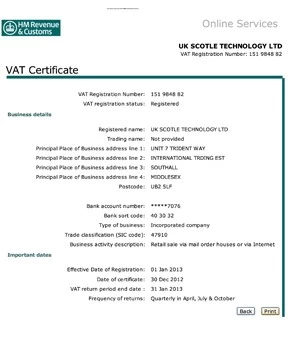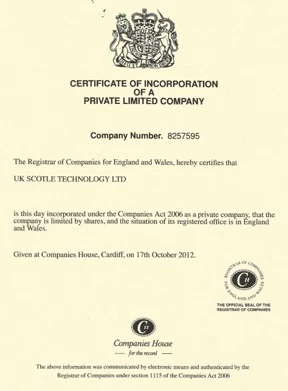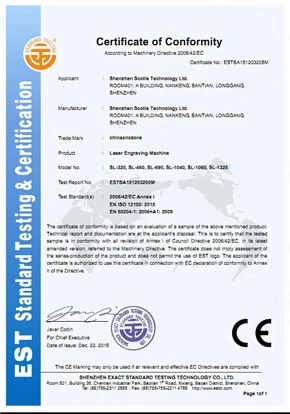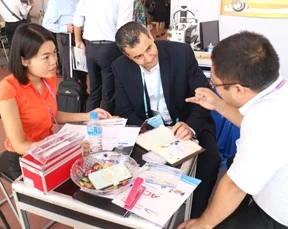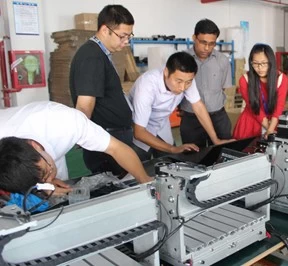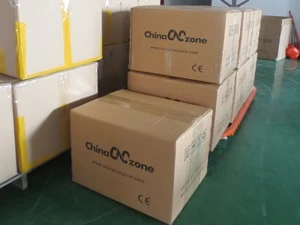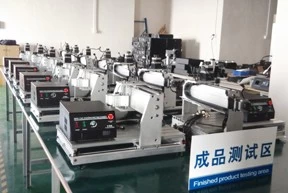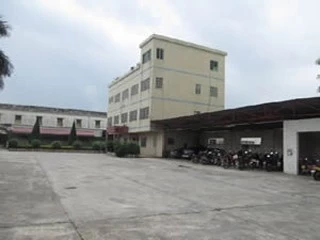CNC machining center operation experience
CNC machining center operation experience
In the mold factory, the CNC machining center is mainly used for the processing of key parts such as mold cores, inserts and copper molds. The quality of the mold core and inserts directly determines the quality of the molded part of the mold. The copper processing quality directly constrains the impact of EDM processing. The key to ensuring the CNC machining quality is preparation before machining. For this position, in addition to having a wealth of machining experience and mold knowledge, you must also pay attention to good communication in your work, especially with the production team and colleagues .
1.CNC machining process
1) Read the drawings and procedures
2) Transfer the corresponding program to the machine tool
3) Check the program head, cutting parameters, etc.
4) Determination of processing size and margin on the workpiece
5) Reasonable clamping of workpiece
6) Accurate alignment of the workpiece
7) Accurate establishment of workpiece coordinates
8) Selection of reasonable tools and cutting parameters
9) Reasonable clamping of tools
10) Safe trial cut method
11) Observation of processing
12) Adjustment of cutting parameters
13) Problems in the processing process and timely feedback from the corresponding personnel
14) Inspection of workpiece quality after processing
2. Precautions before processing
1) For the new mold, the processing drawings must meet the requirements and the data is clear; the processing drawings of the new mold must have the signature of the supervisor, and the columns of the processing drawings have been filled in.
2) The work piece has the qualified mark of the quality department.
3) After receiving the program order, check whether the reference position of the workpiece is consistent with the reference position of the drawing.
4) Look clearly at each requirement on the program sheet and confirm whether the requirements of the program and the drawing are consistent. If there is a problem, you must solve the problem together with the programmer and the production team.
5) According to the material and size of the workpiece, judge the rationality of the programmer to select the tool for the rough or smooth knife program. If the application of the tool is found to be unreasonable, the programmer should be notified immediately to make corresponding changes in order to improve the processing efficiency and the accuracy of the workpiece processing.
3.Precautions for clamping workpieces
1) When clamping the workpiece, pay attention to the position of the code and the extension length of the nut bolt on the pressure plate.
2) The copper male is generally processed by the lock plate. Before starting the machine, the number of materials on the program sheet should be checked to ensure that they are consistent.
3) For the case of receiving more than one piece of copper material on a board, check whether the direction is correct and whether each copper material interferes during processing.
4) According to the shape of the program sheet and the data of the workpiece size, the workpiece should be clamped. It must be noted that the writing method of the workpiece size data is XxYxZ. At the same time, if there is a part drawing, you must check the graphics of the program sheet and the part drawing. Whether it is consistent, pay attention to which direction is out, and the pendulum method of X and Y axes.
5) When clamping the workpiece, you must check whether the size of the workpiece meets the size requirements of the program list. If you have a part drawing, you must check whether the size of the program list is the same as the size of the part drawing.
6) Clean the worktable and the bottom of the workpiece before the workpiece is put on the machine. The machine table and the workpiece surface should use oil stone to push off the burrs and the damaged position.
7) When coding code, make sure that the code will not be injured by the knife, and communicate with the programmer if necessary. At the same time, if the bottom pad is square, the code must be aligned with the square of the pad to achieve the purpose of balanced force.
8) When using a vise to clamp, you must understand the machining depth of the tool to prevent the clamped position from being too long or too short.
9) The screw must be included in the T-shaped block, and it is not allowed to use only a part of the thread. If you need to connect the screw, the upper and lower screws must use half of the thread of the joint. Thread.
10) When setting the Z depth number, it is necessary to see the position of the program single touch number and the data of the highest point of Z. After entering the data into the machine, it must be checked again.
4.Precautions for clamping tools
1) The tool must be clamped firmly, not too short in the handle.
2) Before each cable cutter, check whether the cutter meets the requirements. The length of the cable cutter should be determined according to the processing depth indicated in the program sheet. Generally, it should be slightly longer than the processing depth of 2mm and consider whether the tool holder collides.
3) In case of deep machining depth, you can communicate with the programmer, and use the method of two cable cutters as appropriate, that is, first obtain half to 2/3 of the length, and then obtain a longer length when processing to a deeper position. This can increase processing efficiency.
4) When using the extended cable nozzle, you should especially understand the data such as the depth of the lower knife and the required knife length.
5) Before the cutter head is installed on the machine, the taper matching position should be cleaned with a cleaning cloth, and the corresponding position of the machine tool sleeve is also clean, to avoid iron chips on the matching surface that affect the accuracy and damage the machine tool.
6) Normally, the tool tip is used for the length of the tool (in special cases, the tool is set in the tool), and the program instructions should be carefully checked when setting the tool.
7) When the program is interrupted or the line needs to be re-adjusted, it should be noted whether the depth can be connected with the front. In general, the line can be adjusted up by 0.1mm, and then adjusted according to the situation.
8) Rotating retractable cutter heads, if using water-soluble cutting fluid, should be immersed in lubricating oil for several hours every half month for maintenance, so that the internal parts of the cutter head can be lubricated and not worn.
5.Precautions for calibration and alignment
1) Pay attention to the verticality when dragging the workpiece, drag it flat while pulling the vertical edge.
2) When the workpiece is split, it must be verified twice.
3) After the number of hits is divided, the median position should be checked according to the outline size provided on the program sheet and the size on the parts drawing.
4) All workpieces must be centered using the centering method. The zero position must also be centered on the side of the workpiece before moving to the edge. You must ensure that the two sides have the same margin. If special circumstances require a unilateral fetch, you must obtain confirmation from the production team again before passing. After taking the number on one side, keep in mind the radius of the rod in the compensation.
5) The zero input of the workpiece center must be the same as the three-axis center of the workstation computer drawing.
6.Precautions during processing
1) When the remaining amount on the top surface of the workpiece is too large, when using a large knife to manually remove the remaining amount, remember not to deepen the gong.
2) The most important tool for processing is the first tool, because if you carefully operate and check, you can know whether the tool length compensation, tool diameter compensation, program, speed, etc. are wrong, to avoid damaging the workpiece, tool and machine tool.
3) Trial cutting procedure in the following way:
a) The height of the first point is a maximum increase of 100mm, and use the eyes to feel whether it is correct;
b) Control the "rapid traverse" to 25% and feed to 0%;
c) When the tool approaches (about 10mm) the processing surface, pause the machine;
d) Check whether the remaining stroke and program are correct;
e) After turning on the machine again, put one hand on the pause switch, prepare to stop at any time, and control the feed speed with the other hand;
f) When the tool is very close to the workpiece surface, it can be stopped again, and the remaining stroke of the Z axis must be checked.
g) After the machining cutting is smooth and stable, the controls are returned to the normal state.
4) After entering the program name, copy the program name on the screen with a pen, and then check it with the program list. When opening the program, pay attention to check whether the size of the tool diameter in the program is consistent with the program list, and sign the processor on the program list Fill in the file name and knife diameter in real time in the column, it is forbidden to fill in after or before.
5) In principle, NC mechanics should not leave when the workpiece is roughened. In the case of tool change or assistance in adjusting other machine tools, etc., when leaving, please ask other NC team members or come back regularly to check.
6) When doing medium light, the NC technician should pay special attention to the places that are not opened when the rough is opened to prevent the cutter from hitting this area.
7) Program cut. If the program is interrupted during processing and it takes too much time to run from the beginning, you should notify the team leader and programmer to modify the program and cut off the part that has already been run.
8) The program is abnormal. If there is any abnormal situation in the program, and you are not sure, you can hang high to observe the process, and then decide the next action.
9) During the machining process, the line speed and speed provided by the programmer can be adjusted by the NC technician as appropriate. However, special attention should be paid to the fact that when the small pieces of copper are exposed, the travel speed cannot be opened faster to avoid loosening of the workpiece due to oscillation.
10) During the machining of the workpiece, the NC technician should check with the spare parts chart to see if there are any abnormalities. Once the two are found to be inconsistent, they must immediately stop and notify the person in charge of the team to check whether there is an error.
11) When using a tool longer than 200mm in length, attention must be paid to issues such as margin, feed depth, speed, and travel speed to avoid swinging the knife. At the same time, the travel speed of the corner position should be controlled.
12) The operator must be responsible for detecting the diameter of the tool on the program sheet. At the same time, the diameter of the test should be recorded. If it exceeds the tolerance range, it should be immediately reflected to the team leader or tool change.
13) When the machine is in automatic operation or is available, the operator should go to the workstation to understand the remaining processing programming, prepare and grind the appropriate tools for the next processing, so as to avoid downtime.
14) Process errors are the main reason for wasting time: misuse of inappropriate tools, errors in processing arrangements, waste of time in locations where no or non-computer processing is required, improper use of processing conditions (speed is too slow, empty knife , The tool path is too dense, the feed is too slow, etc.), the above events can be contacted by programming and so on.
15) During the processing, attention must be paid to the wear of the cutter. The blade or cutter should be replaced appropriately. After replacing the blade, pay attention to whether the boundary of the processing coincides.
7.Matters needing attention after processing
1) Confirm that each procedure and each instruction required by the procedure sheet have been completed.
2) After the processing is completed, it is necessary to check whether the shape of the workpiece meets the requirements, and at the same time, carry out a self-check of the workpiece size according to the parts drawing or the process drawing, and find the error in time.
3) Check whether there is any abnormality in each position of the workpiece. If you have any questions, please notify the NC team leader.
4) The leader of the team, programmer and production team need to be notified when the larger workpiece is off the machine.
5) Pay attention to safety when the workpiece is off the machine, especially the protection of the workpiece and the NC machine when the larger workpiece is off the machine.
8.Differentiate the processing precision requirements
Surface quality of finish:
1) Mold kernel and insert
2) Tong Gong
3) The evacuation position of the head hole of the thimble plate
4) Eliminate the phenomenon of shock knife
Finish size:
1) The measurable size must be strictly executed after processing
2) The tool wear should be considered when processing for a long time, especially at the sealing edge, etc.
3) Finishing should use new carbide tools as much as possible
4) Determine the modulus saving after finishing according to the processing requirements
5) Confirmation of quality such as production and quality after processing
6) Depending on the processing requirements, control the tool loss during the processing of the sealing position
9.Take over
1) Confirm the working conditions of shifts, including processing conditions, mold conditions, etc.
2) Confirm whether the equipment works on the shift.
3) Other handovers and confirmations, including drawings, program sheets, tools, measuring tools, fixtures, etc.
10.Workplace finishing
1) Follow the 5S requirements.
2) The tools, measuring tools, fixtures, workpieces, tools, etc. are arranged neatly.
3) Cleaning of the machine tool.
4) Clean the ground of the workplace.
5) Returning of processed tools, idle tools and measuring tools.
6) The processed workpieces are sent to product inspection or corresponding departments.










